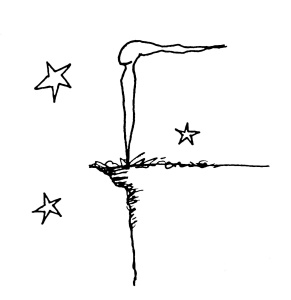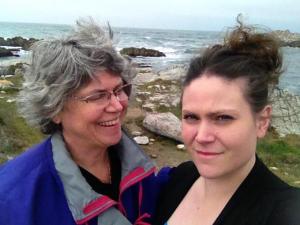 Dad was an organized man who kept meticulous books recording every penny earned and every penny spent. For as long as I could remember, he had exercised right on schedule, played golf on schedule and focused on his bowel regularity. Until he began his walk toward death, letting go wasn’t Dad’s cup of tea.
Dad was an organized man who kept meticulous books recording every penny earned and every penny spent. For as long as I could remember, he had exercised right on schedule, played golf on schedule and focused on his bowel regularity. Until he began his walk toward death, letting go wasn’t Dad’s cup of tea.
Somewhere in his bones, this man who had never been overtly interested in matters of the spirit knew that these final weeks of his life were a sacred invitation of transformation through release. He let go gracefully, if methodically.
When we met his attorney, Dad released his legal responsibilities. He made sure I understood his bookkeeping, then handed over all financial tasks. He walked independently for another week before he surrendered to a rolling walker.
One afternoon, Dad made yet another trek down the long hallway to the bathroom with his rolling walker. He stopped at his bed to take off his Pendleton wool shirt because its length got in the way. I offered to shorten the hem. He refused, insisting that there was no need for me to do that, and continued on his own.
Thursday, Connie came to clean his house, as she had done weekly for the fifteen years since Mom had died. When he told her about his cancer, Connie replied that maybe he would get better.
“No, I am dying,” he corrected Connie. “I’ve had a good, long life and I am ready to die.”
On Friday, Dad stopped walking altogether. We sat together in his bed, as his thoughts vacillated between this world and the next. “I can’t think of any brilliant thoughts to say, though it seems like I should,” he said. “I am quotable.”
All week I’d also felt that I should have been grabbing every opportunity to share profound thoughts about my love of Dad. Instead, we both were learning the richness of shared silence filled with love.
“No one prepares you for dying. Is this the way you thought it would be?” Dad asked me.
He wasn’t expecting an answer, but I was fascinated by his question.
Dad interrupted my pondering, saying, “I want to live a natural death.” He mumbled something else then chuckled, “I didn’t understand that one myself.”
I smiled. So many of our conversations over the years had been practical. Here, with death lurking at the door, we felt free to let our thoughts bounce from the absurd to the profound. All thoughts felt welcome that afternoon as we sat propped up on the bed, side-by-side.
“What if butterflies are the good guys?” he wondered.
I leaned over and kissed his cheek.
Dad was letting go of his life on this Earth. We will all face death one day but today we are facing a different sort of dying: releasing old, outdated ways of living on this planet.
Surrender may not have been my cup of tea so far, but now is a good time for me to practice. Dad’s actions illuminated several skills that help in times of profound change.
Start with an honest assessment of the situation. As Dad responded to unfounded reassurance with, “No, I am dying,” I, too, need to be clear that now is the time to relinquish my tight hold on the status quo. Many of the ways of being that have felt “normal” and “right” must be acknowledged as polluting our world and spirits for us today and for generations to come.
For Dad, death wasn’t an escape; instead, he let go of his “good, long life” with gratitude. Likewise, much of the old has brought me delight and needs to be honored as nurturing my life. However, my culture’s short-sighted, unsustainable and inequitable framework needs to die and be rebuilt.
We speak of violent crime and build more prisons even though violent crime is at a 50 year low. We embrace more and more standard medical tests and treatment (if we can afford it), but overlook the toxic chemicals, radiation and stress that erode human and environmental health. We overlook the implications of privitatization of our water, manipulation of our food supply and destruction of our natural resources while racing through our days at an exhausting speed.
When I am willing to stop walking in the old ways, I can pick up my training wheels for walking into the new.
Dad, pushing his rolling walker, showed another way. He let go of fear in the face of death, and hope was born. He had no idea of what was next, how the process should be or even if butterflies were the good guys. None of that mattered anymore.
After Dad returned to his chair from the bathroom trip where I’d offered to hem his shirt, he reflected, “You know, something interesting just happened. You wanted to do something to make things easier for me, and I wanted to do something to make things easier for you.”
Death is part of life. Transitions aren’t easy, but fighting the inevitable is exhausting. Dad taught me that when I surrender my fear of the unknown, reach out in partnership with others and make daily choices that nurture my global family, I’ll find joy even in the dying parts of my life’s journey.
This is the second in a series about Living while Dying on our way to something new. I offer this in honor of my father, Edward Victor Mathys (1921-2001) and the dying that all of us alive on this planet need to experience now.
Much of this blog was excerpted from my book Big Topics at Midnight: A Texas Girl Wakes Up to Race, Class, Gender and Herself, pages 140-145.
Photograph by Brenda Wills.
 I love the moon and the stars, but I am afraid to be out alone in the dark. My natural tendency is to be on alert for potential dangers, but that’s hard to manage when I can’t see anything.
I love the moon and the stars, but I am afraid to be out alone in the dark. My natural tendency is to be on alert for potential dangers, but that’s hard to manage when I can’t see anything.












